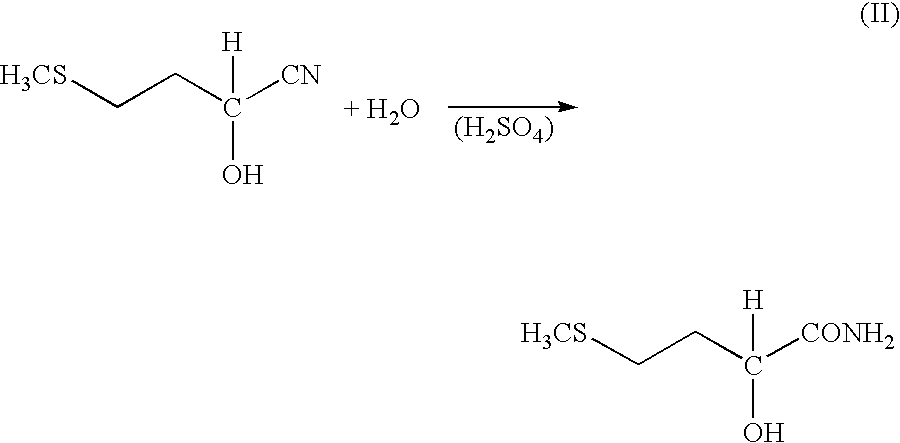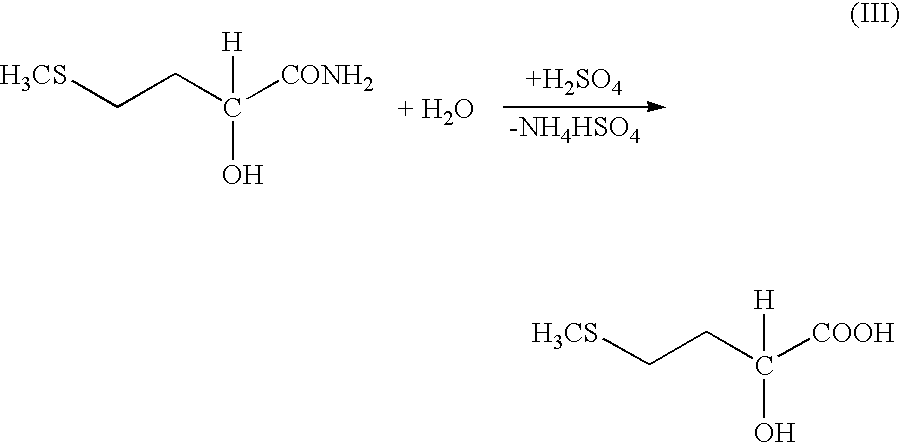Preparation of 2-hydroxy-4-methylthiobutyric acid
a technology of methylthiobutyric acid and methyl thiobutyric acid, which is applied in the preparation of organic compounds, chemical instruments and processes, and organic chemistry. it can solve the problems of enamelled components, high mechanical stress, and annual maintenance investmen
- Summary
- Abstract
- Description
- Claims
- Application Information
AI Technical Summary
Benefits of technology
Problems solved by technology
Method used
Image
Examples
example 1
[0035]The reaction container in which 2-hydroxy-4-methylthiobutyronitrile is converted into 2-hydroxy-4-methylthiobutyramide in the presence of 65–70% strength sulfuric acid at 50–60° C. was charged with samples of material of the type 1.4562 and assessed after 250 hours. A material loss rate of <0.01 mm p.a. was determined.
example 2
[0036]The procedure was according to Example 1, but a sample of material of the type 2.4605 was employed. A material loss rate of <0.01 mm p.a. was determined.
example 3
[0037]The reaction container in which 2-hydroxy-4-methylthiobutyramide is converted to 2-hydroxy-4-methylthiobutyric acid by addition of water (sulfuric acid concentration <40%) at 110° C. was charged with samples of material of the type 2.4602 and assessed after 250 hours. A material loss rate of 0.031 mm p.a. was determined.
PUM
| Property | Measurement | Unit |
|---|---|---|
| temperature | aaaaa | aaaaa |
| temperatures | aaaaa | aaaaa |
| temperatures | aaaaa | aaaaa |
Abstract
Description
Claims
Application Information
 Login to View More
Login to View More - R&D
- Intellectual Property
- Life Sciences
- Materials
- Tech Scout
- Unparalleled Data Quality
- Higher Quality Content
- 60% Fewer Hallucinations
Browse by: Latest US Patents, China's latest patents, Technical Efficacy Thesaurus, Application Domain, Technology Topic, Popular Technical Reports.
© 2025 PatSnap. All rights reserved.Legal|Privacy policy|Modern Slavery Act Transparency Statement|Sitemap|About US| Contact US: help@patsnap.com



